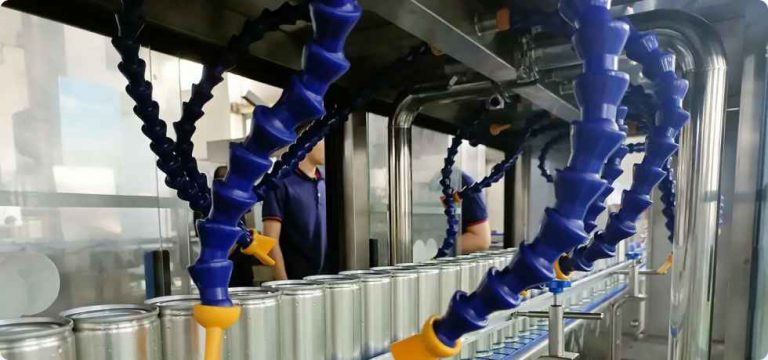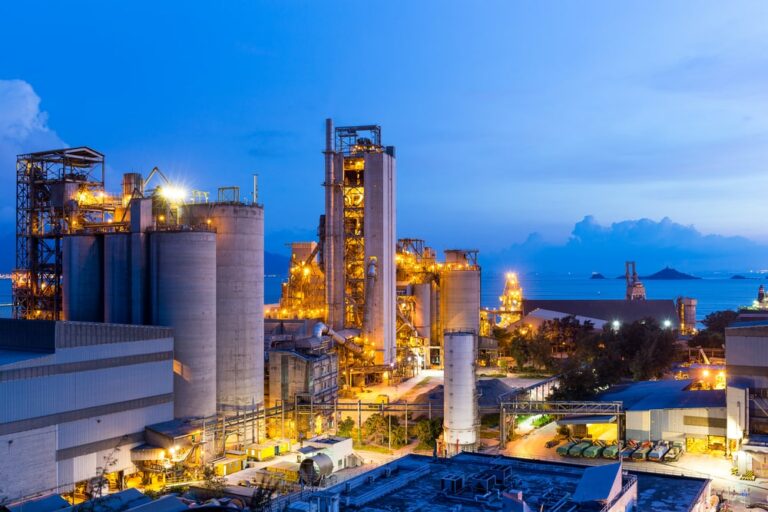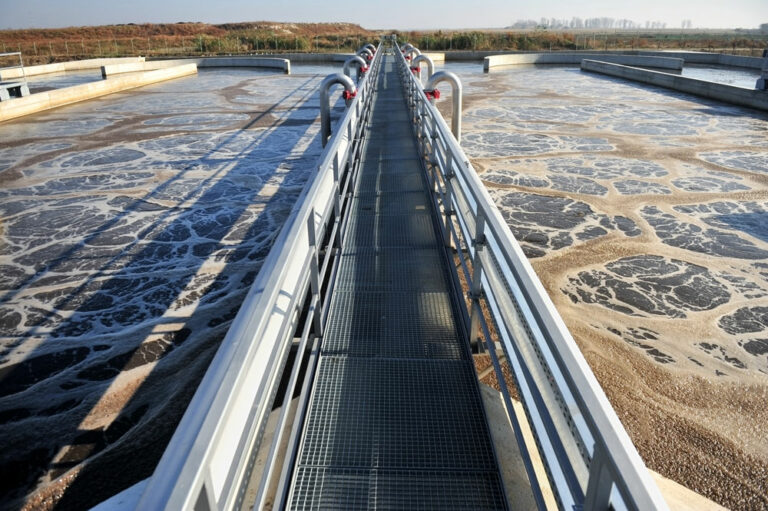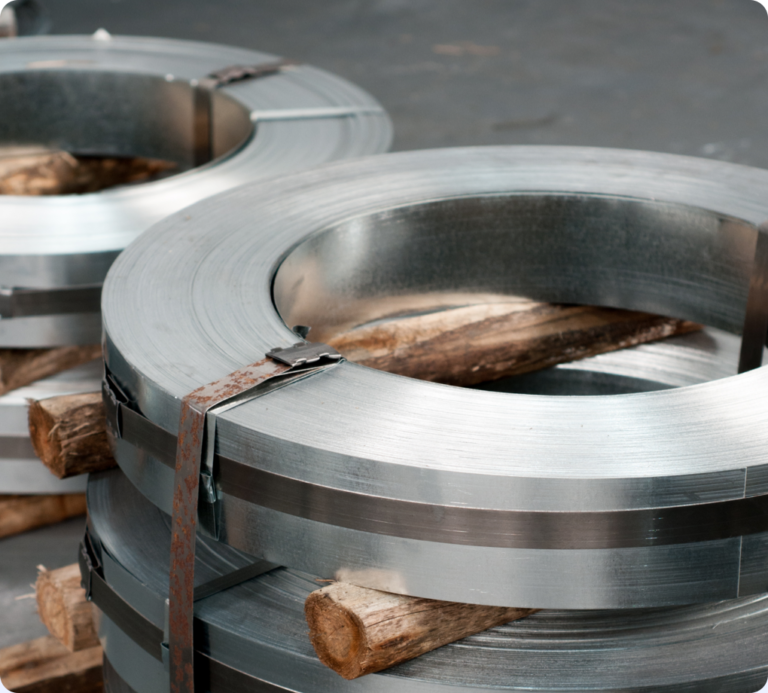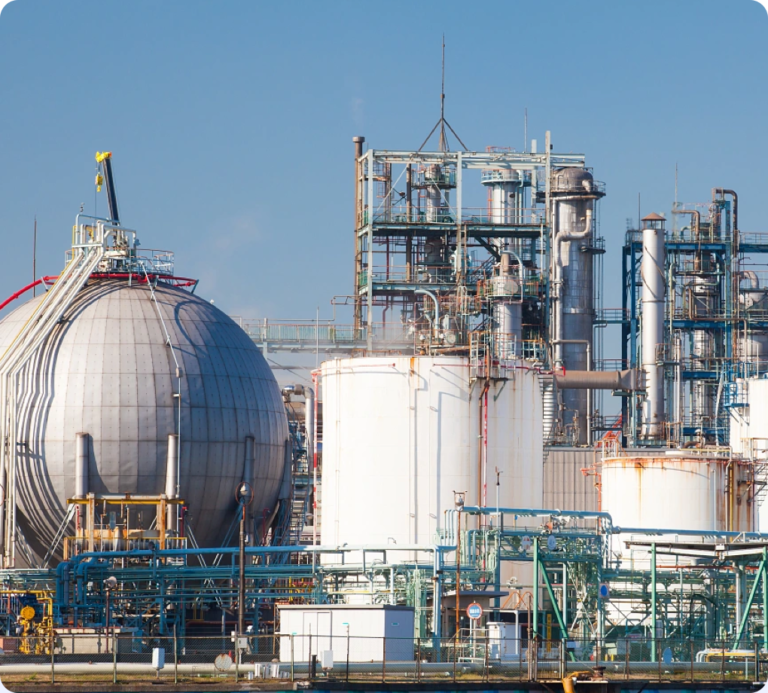RAETTS have realized the R&D and intellectual manufacturing of the whole industrial chain of blowers and compressors. Innovation has never stopped, technology is the king. After more than ten years of innovation and development, RAETTS has broken through the international technology monopoly and created a mature air bearing blower and maglev turbo blower dual production lines firstly in the industry, pioneered the portable and the miniature type air bearing blower.We have Won High Praise From Our Clients Who Came From Europe,America,Asia,Faroe Islands,Tokelau,Congo, Republic of the,Djibouti,Andorra… etc.
RAETTS has passed ISO9001 quality management system certification, ISO14001 environmental management system certification, ISO45001 occupational health and safety management system certification, ISO10012 measurement management system certification, five-star after-sales service system certification, intellectual property management system certification and other authoritative certifications.
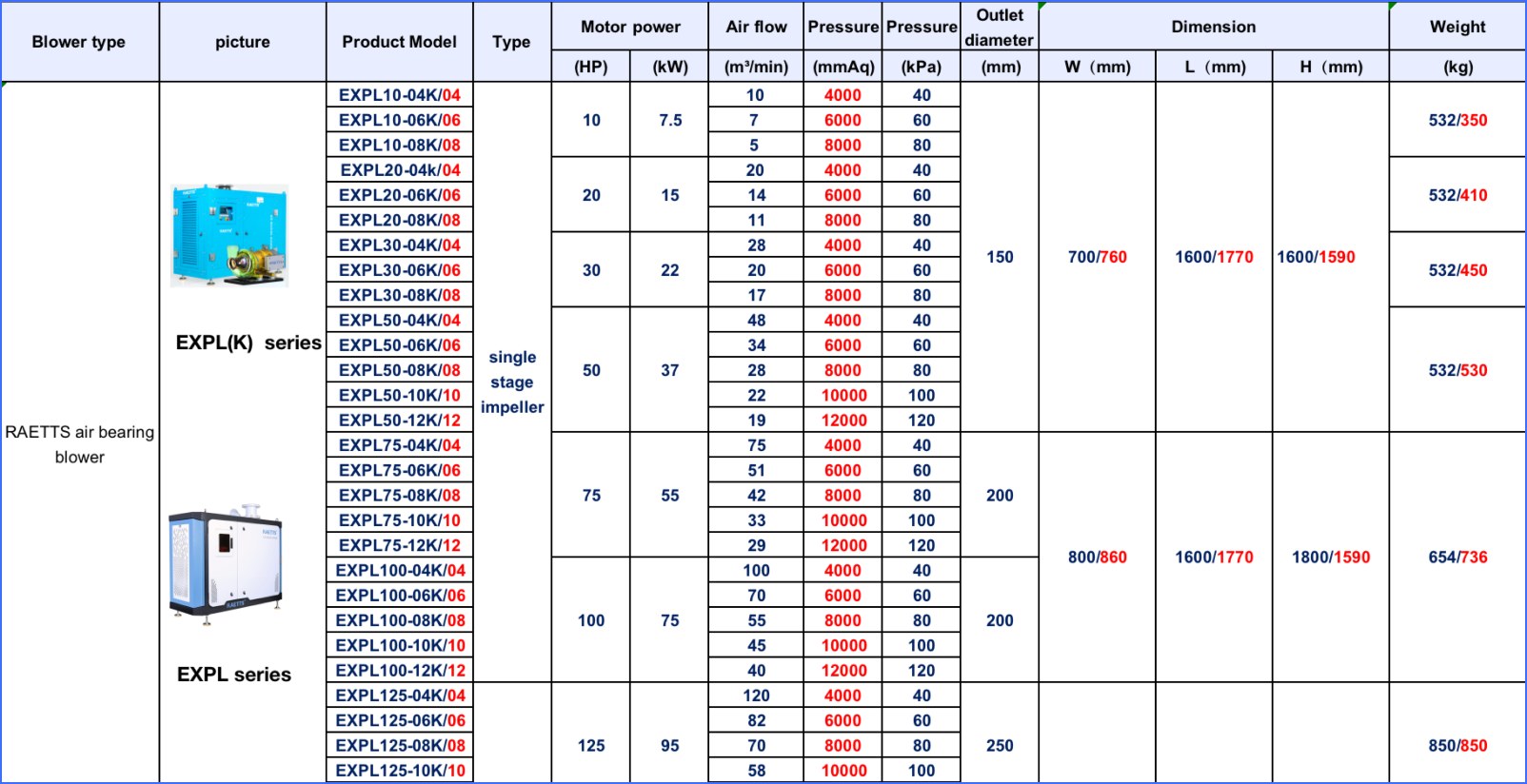
| Product name | Blower conveying systems |
| Keyword | high efficiency turbo blower,Blower Systems for Pneumatic Conveying,air blower for steel plant,air blower solutions for wastewater treatment plants,wastewater treatment aeration blower solutions |
| Place of Origin | China |
| Feature | RAETTS air bearing turbo blower is a brand-new concept blower, which integrates the main core technologies such as “air suspension bearing”, “permanent magnet ultra-high-speed motor”, “high-precision aviation-grade impeller”, and creates a new era of ultra-high efficiency ,low noise and low energy consumption. |
| Dimensions | 706mm*712mm*789mm, (Contact us for specific information to confirm) |
| Applicable Industries | paper making, etc. |
| Weight | 323kg |
| delivery date | the common delivery time will be 30-40 days. |
| terms of paymen | RAETTS accept payment by T/T(30% advance payment,70% before shipment) |
| Life span | 18 years (Contact us for specific information to confirm) |
| After-sale service | RAETTS warranty time for air bearing blower and maglev turbo blower is 24months,for high speed centrifugal blower is 12 months. |
| Advantage | We keep good quality and competitive price to ensure our customers benefit |
| Packing | 846x852x883mm(Contact us for specific information to confirm) |
| OEM/ODM | Customization Service Provided |
| Sales country | All over the world for example:Faroe Islands,Tokelau,Congo, Republic of the,Djibouti,Andorra |
| MOQ | 8pcs(Contact us for specific information to confirm) |
| production capacity | production capacity RAETTS production quantity for air bearing blower and maglev turbo blower is about 200pcs/month,for high speed centrifugal blower is about 700pcs/month. |
| raw materials | RAETTS air blower impeller in made of aluminum alloy,enclosure material is carbon steel,rotor material is cast iron.If customers need other special materials,we can also customized according to customers requirements |
| technology | RAETTS air bearing blower technology is originated from South Korea and maglev turbo blower technology is originated from Germany.RAETTS also have R&D team from Xi’an Jiaotong University |
| quality system | RAETTS has quality management system certificate ISO9001:2015 and enviromental management system certificate ISO14001:2015 |

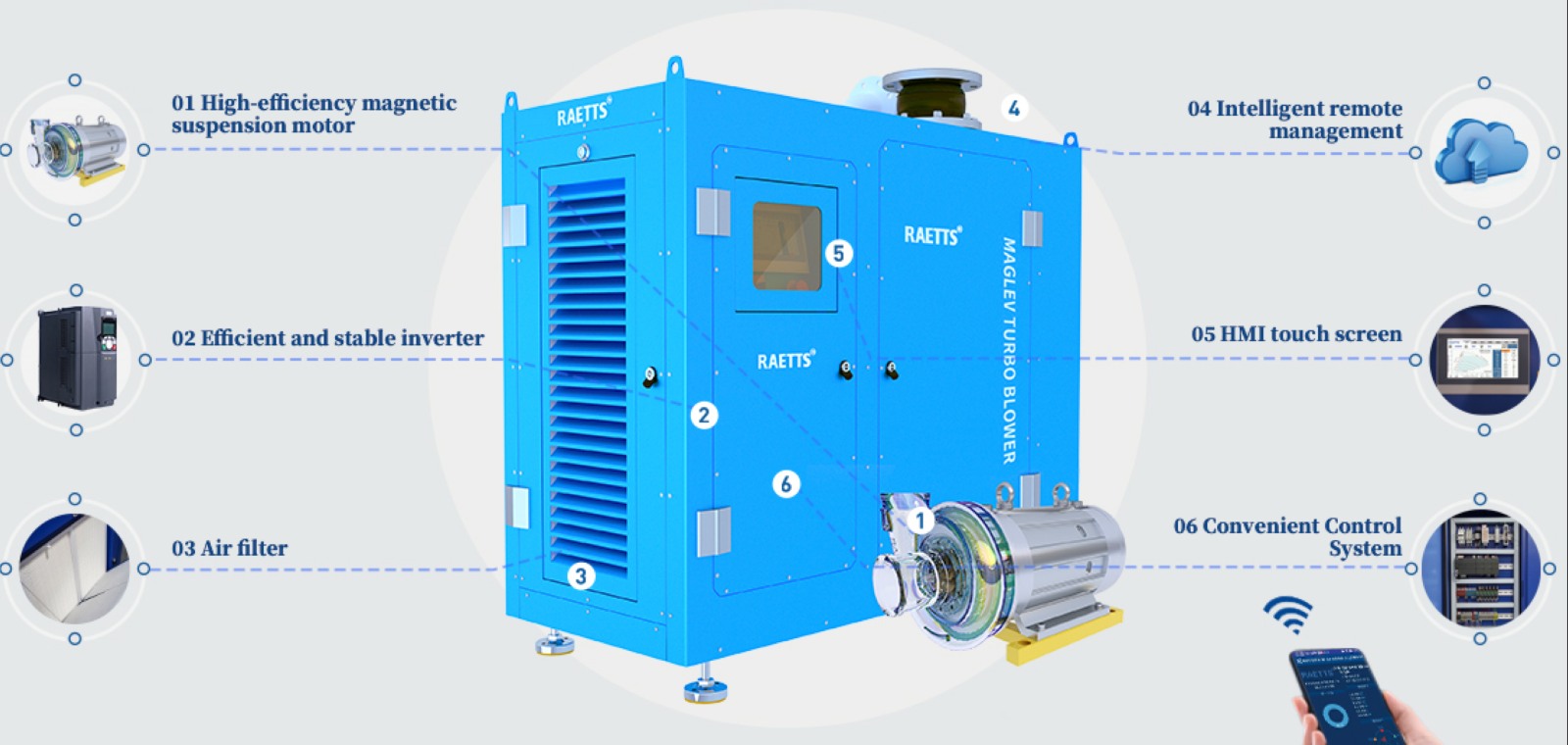
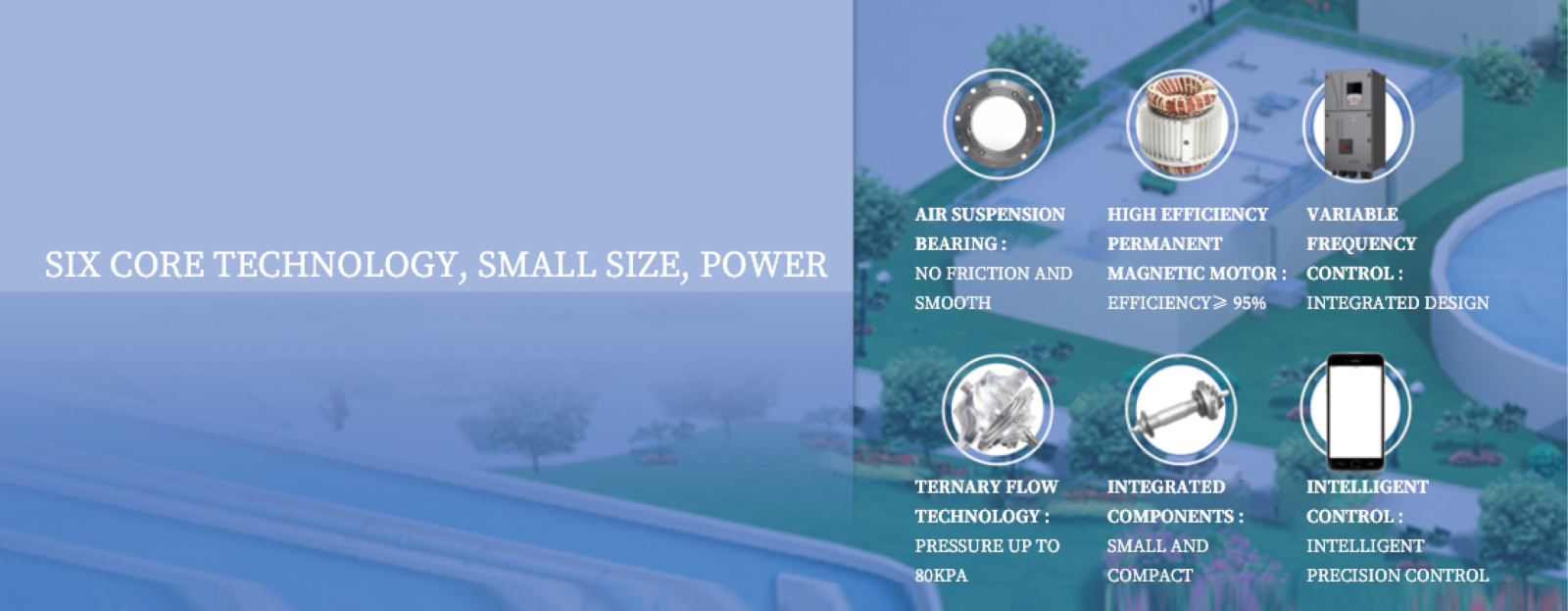
Blower conveying systems services FAQs Guide
Are you looking for a quick review guide about Blower conveying systemsservices?
An ultimate FAQ buying guide is available to help you.This guide contains all the information about all the important facts, figures, and various processes regarding Blower conveying systems services.
Let’s continue!
2.Are There Customizable Options Available for Turbo Blowers?
3.How Does a Turbo Blower Ensure Oil-Free Operation?
4.How Does a Turbo Blower Improve Overall System Performance?
5.What Type of Filter is Recommended for Use with a Turbo Blower?
6.What is the Overall Efficiency Rating of a Turbo Blower?
7.About Blower conveying systems patent
8.About Blower conveying systems delivery date
9.What is the Maximum Pressure and Flow Rate of a Turbo Blower?
10.Can a Turbo Blower Be Operated Remotely?
11.What is the Cost Comparison between a Turbo Blower and Other Types of Blowers?
12.What are the different types of Blower conveying systems available in the market?
13.How Does a Turbo Blower Affected by Changes in Ambient Temperature?
14.What Noise Levels Can I Expect from a Turbo Blower?
15.About Blower conveying systems production management system
1.What Measures are in Place for Protecting Against Overloading a Turbo Blower?
We continue to improve Blower conveying systems products and processes to improve efficiency.
1. Design and Engineering: Turbo blowers are designed and engineered to withstand a certain amount of load and stress. The design includes factors such as material strength, bearing capacity, and rotor dynamics to ensure that the blower can handle the expected load without failure.
2. Load Monitoring: Most turbo blowers are equipped with load monitoring systems that continuously measure the load on the blower. This allows operators to keep track of the load and make adjustments if necessary to prevent overloading.
3. Safety Margins: Turbo blowers are designed with safety margins to account for unexpected increases in load. These safety margins provide a buffer to prevent overloading and protect the blower from damage.
4. Control Systems: Advanced control systems are used to regulate the speed and flow of the blower. These systems can adjust the blower’s output to match the required load, preventing overloading.
5. Vibration Monitoring: Vibration monitoring systems are used to detect any abnormal vibrations in the blower. Excessive vibrations can be an indication of overloading, and the system can automatically shut down the blower to prevent damage.
6. Temperature Monitoring: Turbo blowers generate a lot of heat, and excessive heat can be a sign of overloading. Temperature monitoring systems can detect any abnormal increases in temperature and shut down the blower to prevent damage.
7. Regular Maintenance: Regular maintenance and inspections are crucial for identifying any potential issues that could lead to overloading. This includes checking for wear and tear, lubrication levels, and any other signs of damage.
8. Training and Education: Proper training and education of operators is essential for preventing overloading. Operators should be familiar with the blower’s capabilities and know how to operate it within its limits to avoid overloading.
2.Are There Customizable Options Available for Turbo Blowers?
Being one of the top Blower conveying systems manufacturers in China, We attach great importance to this detail.
Yes, there are customizable options available for turbo blowers. Some of the common customizable options include:
1. Motor Size: The motor size can be customized to meet specific power requirements and operating conditions.
2. Impeller Size and Design: The impeller size and design can be customized to achieve the desired flow rate and pressure.
3. Material of Construction: The material of construction can be customized to suit the application and environment. For example, stainless steel or corrosion-resistant coatings can be used for applications in corrosive environments.
4. Inlet and Outlet Configurations: The inlet and outlet configurations can be customized to fit the existing piping system or to optimize the flow pattern.
5. Control System: The control system can be customized to include features such as variable speed drives, remote monitoring, and automation.
6. Sound Attenuation: Sound attenuation options can be added to reduce the noise level of the turbo blower.
7. Mounting Options: The mounting options can be customized to fit the available space and installation requirements.
8. Accessories: Various accessories such as filters, silencers, and dampers can be added to the turbo blower to enhance its performance and efficiency.
It is important to consult with the manufacturer or supplier to discuss the specific customization options available for a particular turbo blower model.
3.How Does a Turbo Blower Ensure Oil-Free Operation?
We pay attention to user experience and product quality, and provide the best product quality and lowest production cost for cooperative customers.
A turbo blower ensures oil-free operation through its design and construction, as well as through the use of specialized components and systems.
1. Oil-Free Design: Turbo blowers are designed to operate without the need for oil lubrication. This means that all the moving parts, such as the impeller and bearings, are designed to function without the use of oil. This eliminates the risk of oil contamination in the air stream.
2. Magnetic Bearings: Turbo blowers use magnetic bearings instead of traditional oil-lubricated bearings. These bearings use magnetic fields to levitate and support the rotating shaft, eliminating the need for oil lubrication. This also reduces friction and wear, resulting in longer service life and improved efficiency.
3. Air Cooling: Turbo blowers use air cooling instead of oil cooling. This means that the blower is cooled by the surrounding air, rather than by circulating oil. This eliminates the risk of oil leaks and contamination.
4. Sealed Enclosure: Turbo blowers are enclosed in a sealed housing, which prevents any oil from escaping into the air stream. This ensures that the air being delivered is completely oil-free.
5. Oil-Free Seals: The seals used in turbo blowers are specially designed to be oil-free. This prevents any oil from leaking into the air stream and ensures that the air being delivered is completely oil-free.
6. Oil-Free Filtration: Turbo blowers use specialized oil-free filtration systems to remove any oil or contaminants from the air stream. This ensures that the air being delivered is clean and oil-free.
Overall, the combination of these design features and specialized components ensures that a turbo blower operates without the need for oil lubrication, resulting in completely oil-free operation. This is essential for applications where oil contamination is not acceptable, such as in food and beverage production, pharmaceutical manufacturing, and electronics production.
4.How Does a Turbo Blower Improve Overall System Performance?
We have a wide range of Blower conveying systems customer groups and establishes long -term cooperative relationships with partners. The countries we provide services include Faroe Islands,Tokelau,Congo, Republic of the,Djibouti,Andorra.
A turbo blower is a type of centrifugal blower that uses a high-speed impeller to generate air flow. It is commonly used in industrial and municipal applications for a variety of purposes, including aeration, ventilation, and pneumatic conveying.
One of the main ways that a turbo blower improves overall system performance is by providing a higher flow rate and pressure compared to traditional blowers. This is due to the high-speed impeller, which can rotate at speeds of up to 50,000 RPM, creating a more powerful and efficient air flow.
Additionally, turbo blowers are designed to be more energy-efficient than traditional blowers. They use advanced technologies such as variable frequency drives (VFDs) and magnetic bearings to reduce energy consumption and operating costs. This not only saves money but also reduces the carbon footprint of the system.
Another advantage of turbo blowers is their compact size and lightweight design. This makes them easier to install and requires less space, which is especially beneficial in applications where space is limited. The compact design also allows for easier maintenance and reduces the need for frequent repairs.
Furthermore, turbo blowers are known for their quiet operation. The high-speed impeller and advanced technologies used in turbo blowers result in lower noise levels compared to traditional blowers. This is particularly important in applications where noise pollution is a concern.
Overall, the improved performance of a turbo blower translates into better system efficiency, lower operating costs, and reduced environmental impact. This makes it a popular choice for a wide range of industrial and municipal applications.
5.What Type of Filter is Recommended for Use with a Turbo Blower?
We are centered on customers and always pay attention to customers’ needs for Blower conveying systems products.
A high-efficiency particulate air (HEPA) filter is recommended for use with a turbo blower. This type of filter is designed to capture small particles and contaminants, making it ideal for use with a turbo blower which can generate high air flow rates. HEPA filters are also commonly used in industrial and medical settings where clean air is crucial.
6.What is the Overall Efficiency Rating of a Turbo Blower?
We are a new Blower conveying systems manufacturer.
The overall efficiency rating of a turbo blower can vary depending on the specific model and manufacturer. However, on average, turbo blowers have an overall efficiency rating of around 70-80%. This means that for every 100 units of energy input, the turbo blower can produce 70-80 units of output energy. Factors such as design, size, and operating conditions can also affect the efficiency of a turbo blower.
7.About Blower conveying systems patent
RAETTS won 5 Patents for invention, 18 Patents for utility models,3 Design patents +2 software copyrights,Dozens of patents under application,and formulated 1 Industrial standard and 2 Technical standards.
8.About Blower conveying systems delivery date
For the regular model air blowers(air suspension blower and maglev turbo blower) which RAETTS is producing,the common delivery time will be 30-40 days.For Super air blower and EXPLORER series high speed centrifugal air blower,delivery date is about 10 days.For some other R&D products,RAETTS delivery data is about 3-4 months.
9.What is the Maximum Pressure and Flow Rate of a Turbo Blower?
We should have a stable supply chain and logistics capabilities, and provide customers with high -quality, low -priced Blower conveying systems products.
The maximum pressure and flow rate of a turbo blower can vary depending on the specific model and manufacturer. However, in general, turbo blowers can achieve pressures up to 15 psi (1 bar) and flow rates up to 10,000 cubic feet per minute (cfm) (283 cubic meters per minute). Some high-performance turbo blowers may be able to achieve even higher pressures and flow rates. It is important to consult the manufacturer’s specifications for the specific turbo blower being used to determine its maximum pressure and flow rate capabilities.
10.Can a Turbo Blower Be Operated Remotely?
I have a comprehensive after -sales service system, which can pay attention to market trends in time and adjust our strategy in a timely manner.
Yes, a turbo blower can be operated remotely through the use of a remote control system. This system allows the operator to control the speed and other functions of the turbo blower from a distance, without the need to physically be near the blower. This can be useful in situations where the blower is located in a hard-to-reach or hazardous area, or when the operator needs to monitor and adjust the blower from a control room or other remote location. The remote control system typically consists of a control panel, sensors, and a communication system that allows for real-time monitoring and control of the blower.
11.What is the Cost Comparison between a Turbo Blower and Other Types of Blowers?
We focus on providing high Blower conveying systems quality products and services.
The cost of a turbo blower can vary depending on the size, brand, and features. However, in general, turbo blowers tend to be more expensive than other types of blowers such as centrifugal blowers and positive displacement blowers.
Centrifugal blowers are typically the most affordable option, with prices ranging from $500 to $10,000. Positive displacement blowers are slightly more expensive, with prices ranging from $1,000 to $20,000.
On the other hand, turbo blowers can cost anywhere from $5,000 to $50,000, depending on the size and features. This makes them significantly more expensive than other types of blowers.
However, it is important to note that turbo blowers are more energy-efficient and have lower operating costs compared to other types of blowers. This means that while the initial cost may be higher, the long-term cost savings can make up for it.
Additionally, turbo blowers have a longer lifespan and require less maintenance, which can also contribute to cost savings in the long run.
Overall, the cost comparison between a turbo blower and other types of blowers will depend on the specific needs and requirements of the application. It is important to consider not just the initial cost, but also the long-term cost and efficiency when making a decision.
12.What are the different types of Blower conveying systems available in the market?
For the industrial air blower,normally it is including side channel blower(also called ring blower),roots blower(also called lobe blower),single-stage centrifugal blower,multi-stage centrifugal blower,air foil bearing blowers and maglev turbo blowers.
13.How Does a Turbo Blower Affected by Changes in Ambient Temperature?
We attach importance to the innovation ability and team spirit of employees, have advanced R & D facilities and laboratories, and have a good quality management system.
A turbo blower is a type of centrifugal blower that uses a high-speed impeller to generate air flow. The performance of a turbo blower can be affected by changes in ambient temperature in several ways:
1. Air Density: The density of air decreases as the temperature increases. This means that the same volume of air at a higher temperature will have a lower mass compared to the same volume of air at a lower temperature. As a result, the air entering the turbo blower will have a lower mass, which can affect the blower’s performance.
2. Air Viscosity: The viscosity of air also decreases with an increase in temperature. This means that the air will be less resistant to flow, resulting in a decrease in pressure and flow rate. This can affect the efficiency of the turbo blower, as it may require more power to achieve the desired flow rate.
3. Bearing Temperature: The bearings of a turbo blower can be affected by changes in ambient temperature. If the temperature is too high, it can cause the bearings to overheat, leading to premature wear and failure. On the other hand, if the temperature is too low, the bearings may not reach their optimal operating temperature, resulting in reduced efficiency and increased wear.
4. Motor Performance: The motor that drives the turbo blower can also be affected by changes in ambient temperature. If the temperature is too high, it can cause the motor to overheat, leading to reduced performance and potential damage. Similarly, if the temperature is too low, the motor may not reach its optimal operating temperature, resulting in reduced efficiency and increased wear.
To mitigate the effects of ambient temperature on a turbo blower, it is important to properly size and select the blower for the specific operating conditions. This may include using a larger blower or incorporating a cooling system to maintain optimal operating temperatures. Regular maintenance and monitoring of the blower’s performance can also help identify any issues caused by changes in ambient temperature and address them promptly.
14.What Noise Levels Can I Expect from a Turbo Blower?
We operate our Blower conveying systems business with integrity and honesty.
The noise levels of a turbo blower can vary depending on the specific model and manufacturer. However, on average, a turbo blower can produce noise levels between 70-90 decibels (dB) at a distance of 3 feet. This is comparable to the noise level of a vacuum cleaner or a busy street. Some newer models of turbo blowers may have noise levels as low as 60 dB, which is similar to the noise level of a normal conversation. It is important to note that the noise level can also be affected by the installation location and any additional soundproofing measures that may be in place.
15.About Blower conveying systems production management system
RAETTS use 6S system to manage the production,we also have enviromental management system certificate ISO14001:2015 and occupational health and safety management ISO45001:2018
Tag:Blower For Mining,positive displacement blowers for pressure conveying systems,air blower for Textile industry,air blower for wastewater treatment plant,Pneumatic conveying blowers,centrifugal air blower,Pulp and Paper compressor solutions,SBR wastewater treatment blower

